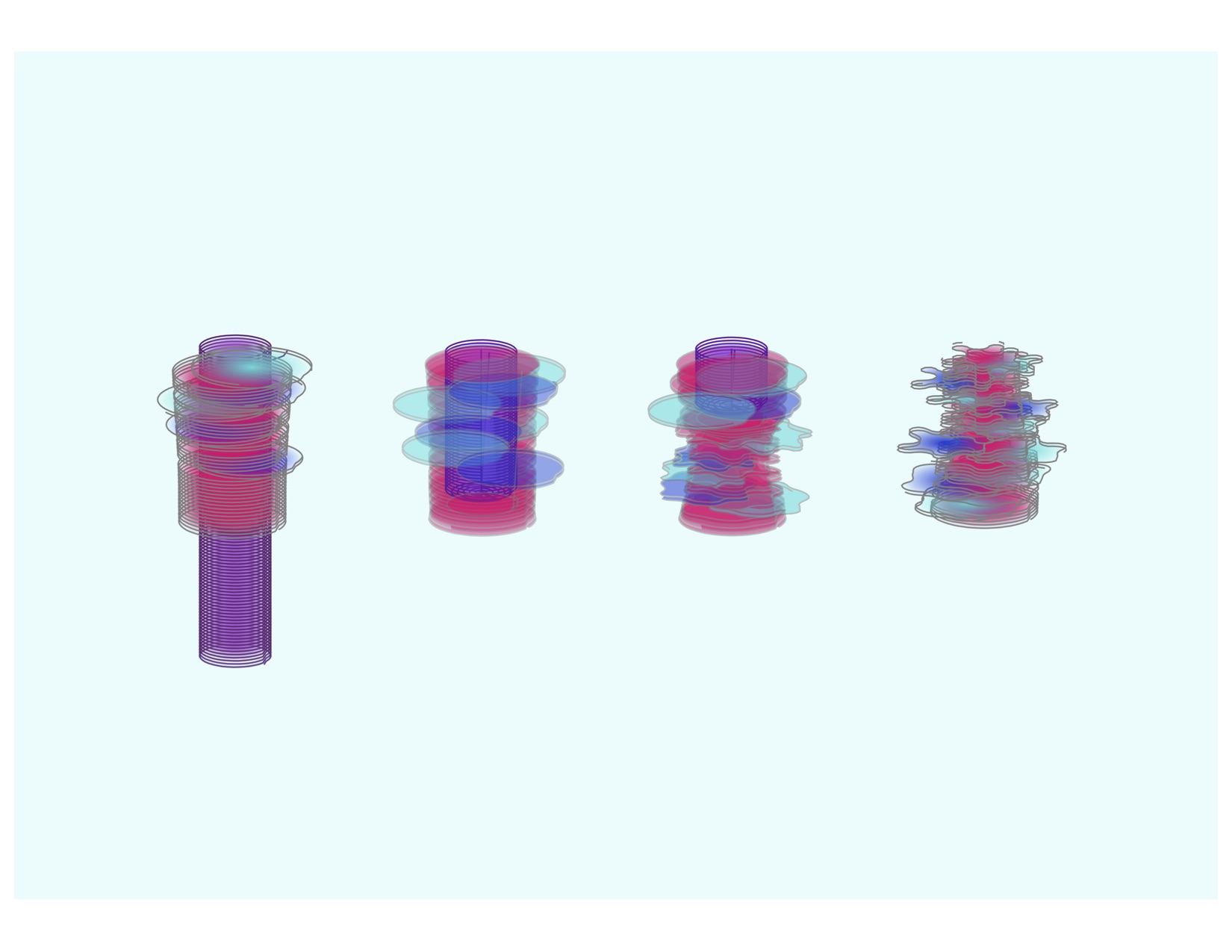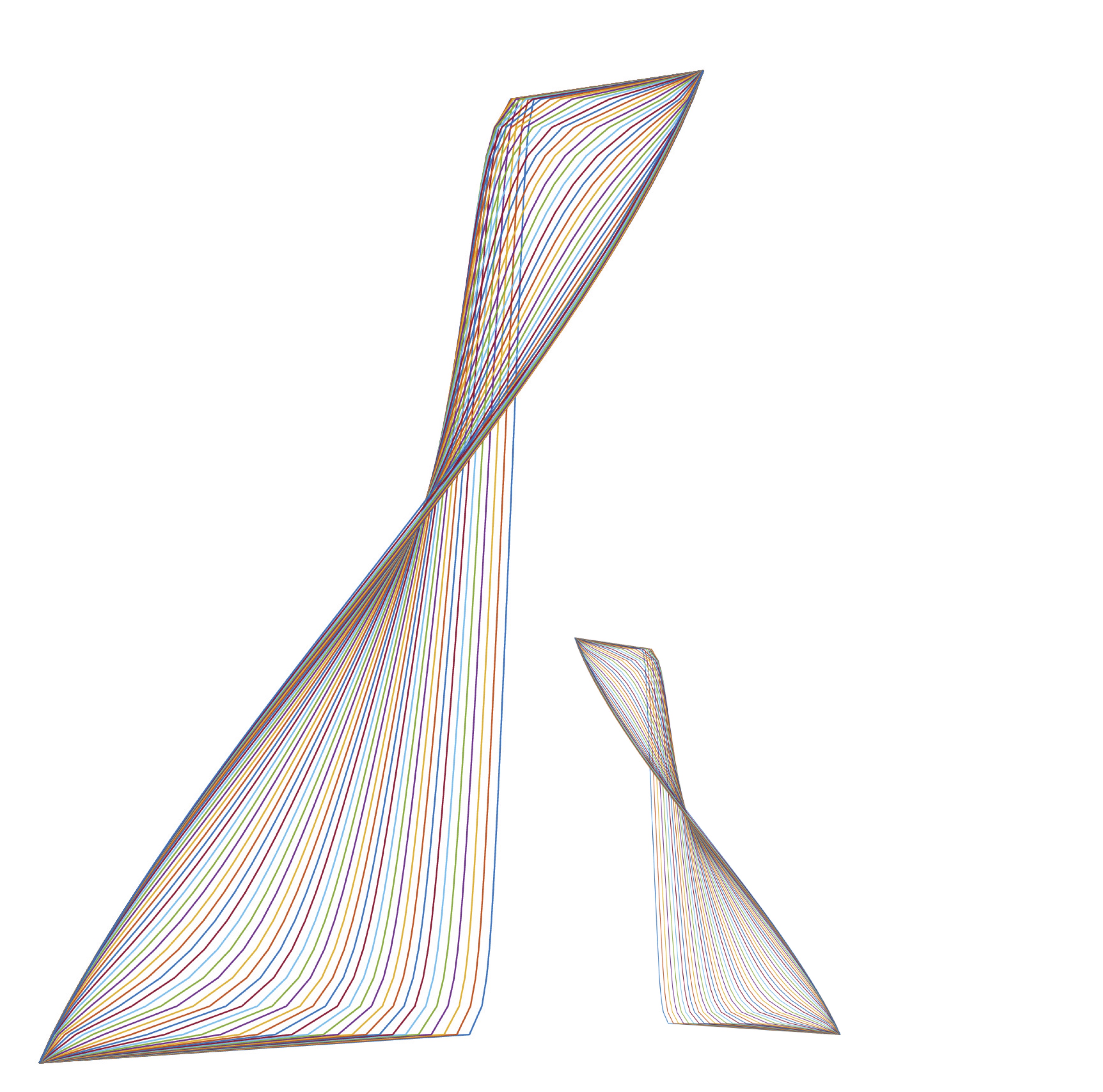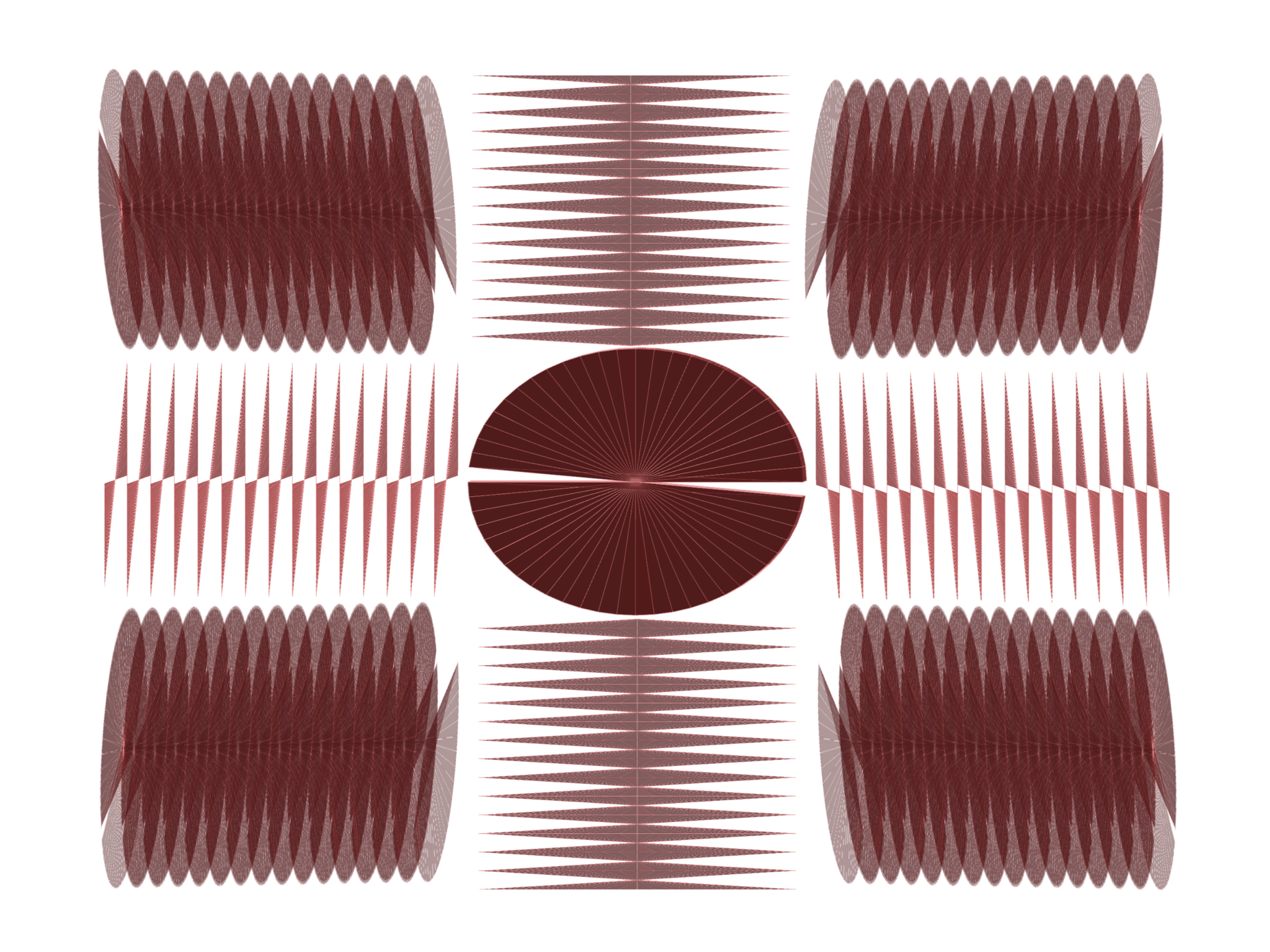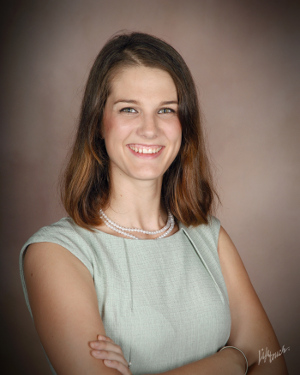A collection of computational art pieces submitted in various years to the CCS (Center for Computational Science) Art Show at Tulane University.
All four of these pieces originate in simulations run for my doctoral research into the elastohydrodynamics of a simplifed human birth model, in which I studied Stokes flow between two cylinders, usually with the outer cylinder elastic and the inner cylinder rigid. Titles have mostly changed since they were originally shown.

Title: Birth
As a rigid inner cylinder (baby) is propelled at a constant velocity through a passive elastic tube (birth canal) immersed in Stokes flow, the tube deforms and then buckles with multiple lobes as the inner cylinder exits the tube and drives a pressure drop in its wake. I plotted various stills from this simulation as simple 3D line plots in Matlab, and then edited the images with GIMP, pulling more and more cross sections of the elastic tube out of place as simulation time went on.

Title: Exploding Babies, a.k.a. Moon Through Smoke
Due to the stiffness of the system caused by the spring forces compiling the elastic tube, it’s very easy to choose a time step just slightly too large and have the tube blow up. The title is misleading; I enforced a constant velocity on the inner cylinder baby (shown in white) in this simulation, so it never exploded. Only mom.

Title: Birds, or: flow profiles between rigid cylinders
I used the method of regularized stokeslets to relate forces and fluid velocity/pressure in the system, which involves approximating point forces with a smooth “blob” and then solving the Stokes equations exactly given those forces. This method requires a regularization parameter that determines how close an approximation to a point force our smoothed-out forces are. To choose the best value for the regularization parameter, I ran simulations with a rigid inner cylinder moving through a rigid tube and with the inner cylinder completely filling (lengthwise) the outer tube, I measured the fluid velocity in the direction of the cylinder’s movement between the two cylinders at the center of the system where it would be least affected by flow outside the tube. I compared these fluid velocity profiles with the analytical solution for Stokes flow between infinitely long concentric cylinders to choose the best regularization parameter to minimize the error. This image displays two copies of a series of numerical solutions to the flow between concentric cylinders with the inner cylinder moving, computed with different regularization parameter values.

Title: Exploding Babies 2
This was a happy accident. While plotting the inner cylinder using panels in Matlab, I mis-typed an index value by one digit, and produced this lovely zigzag coil. This is the coil viewed from nine different directions.
